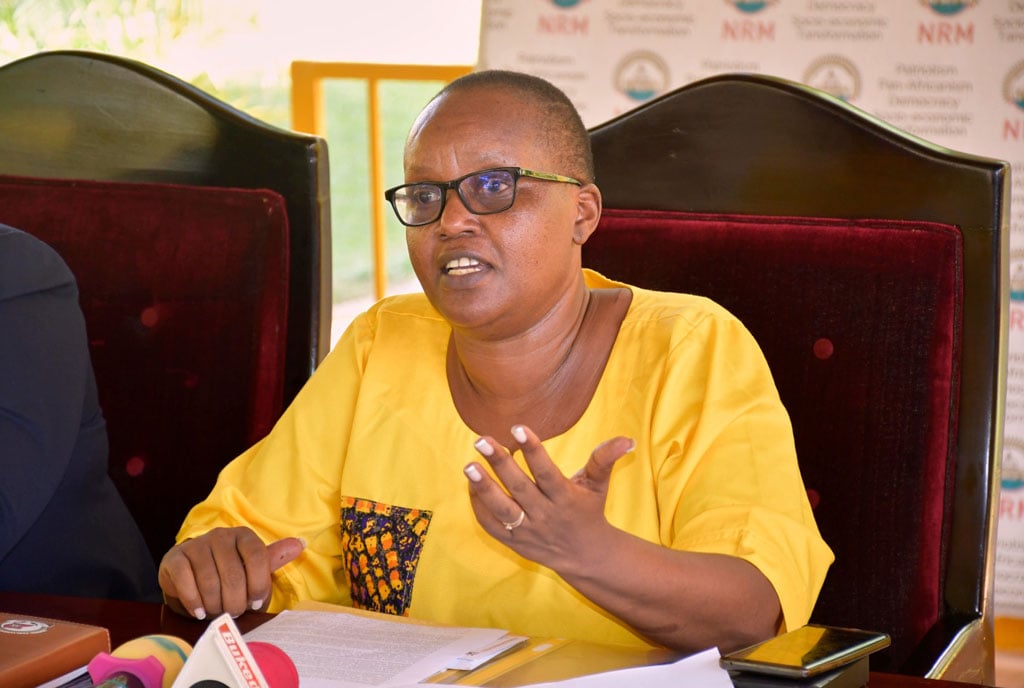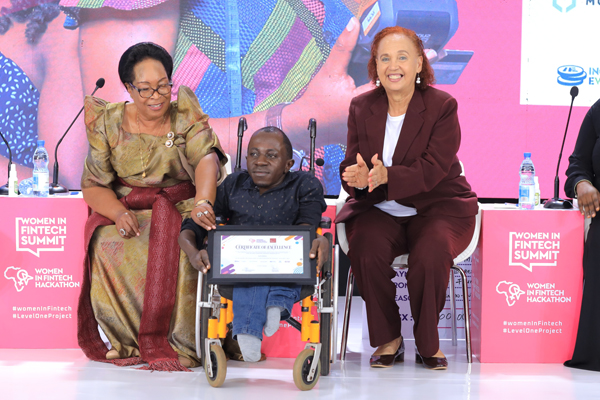Prime
Tech: Creating opportunities for females

Caroline Owashaba believes in the need to fight for gender equality PHOTO | COURTESY
What you need to know:
Opinion. Does digital tech increase the challenges girls and women face daily?
Uganda joined the rest of the world on March 8, to observe International Women’s Day, whose theme was DigitALL: Innovation and technology for gender equality. This was in line with the theme of the 67th session of the Commission on the Status of Women, Innovation and technological transformation, and education in the digital age for achieving gender equality and the empowerment of all women and girls.
In 1995, 189 nations including Uganda, ratified the Beijing Declaration and Programme of Action that aimed to increase the international community’s efforts to achieving gender equality and giving women and girls better opportunities. This characterised as a response to the collective efforts of women and girls worldwide who have fought for gender equality and women’s rights. Today, everyone benefits from gender equality and women’s rights are human rights.
Uganda on equality
Uganda developed national policies that promote gender equality by promoting girls and women in education, leadership and governance through the enactment and implementation of gender sensitive laws. Uganda has given girls and women the opportunity to advance in science, technology, engineering, and Maths (STEM), but this has been associated with difficulties due to the country’s high rate of poverty, lack of access to and knowledge of technology, and a significant knowledge gap on how to address issues related to child online protection.
Uganda did well in ensuring education for all by granting girls 1.5 points at the university entry level, not only to increase the number of girls in university, but also to ensure that moreb girls studying sciences could enroll in tertiary institutions. Also to join the Uganda skilling programmes, technical vocational and education training systems in Uganda (TVET), and the Uganda Business and Technical Examinations Board through the Ministry of Education (UBTEB). For this to be more effective for students and graduates, technology must be introduced to ensure that more girls and women are well equipped with digital skills in communities and schools. Thus, we must work twice as hard to ensure that girls remain in school and thrive thereafter.
Children and young women have unprecedented opportunity to connect, communicate, learn, obtain information, and express their opinions on issues that affect their lives and communities due to the rapid development of information and communication technology. The safety of girls online and offline faces substantial issues as a result of increased and widespread access to mobile and internet technology.
For adolescent girls, women and future generations, the technology sector must play a crucial role in laying the groundwork for a safer and secure use of other technologies, including internet-based services. . Where domestic laws have not yet caught up with international law, business has the opportunity and the duty to make their business practices in conformity with those norms. (Unicef, 2015) Industry guidelines for protecting children online.
Fewer women online
There are 200 million fewer women online than men. In Uganda, the gender gap in ICT is prevalent; women have less access to and use of ICT skills than men. Women are thought to be able to access stronger networks, job and employment prospects, business opportunities, and educational opportunities if they are well-equipped with ICT skills. This area has frequently been linked to cyberbullying, which promotes all forms of violence against girls and women based on their gender. Gender inequalities on the internet are intricately linked.
If we used a gender responsive approach to innovation, technology, and digital education, there would be a greater awareness of girls’ and women’s rights and civic engagement in advancing digital technology, which has enormous potential to address development and humanitarian challenges as we work towards the 2030 Agenda for Sustainable Development Goals. Unfortunately, this has led to increasing inequalities in access to digital skills and technologies, with girls and women falling behind as a result of the gender divide.
The primary impediment to women’s Internet access in Uganda is a lack of electricity and communication infrastructure in rural areas, where women make up a sizable proportion of the population. According to the Uganda Communications Commission, only 20 per cent of Internet users live in rural areas, leaving 60 per cent of the population, primarily women without internet access.
With the advancement of technology, children are exposed to internet-connected devices, and their online safety is not guaranteed. It’s associated with different kinds of crime cyber bullying, chat room, child pornography, nudity.
When it comes to internet access and use, African children, particularly the girl child, face enormous challenges. Studies on child safety and security indicate that a quarter of African children with internet access are exposed to sexually explicit materials, with only a small percentage of adolescent girls reporting such incidents. Child online safety has become a global concern, with several organisations, including Unicef, launching various awareness campaigns. However, there is still a significant knowledge gap on how to address child online safety issues.
To bridge the gender ICT gap…
The government should focus on impacting the digital gender gap by providing opportunities on economic and social media inequalities. If we use digital skills for women in rural and urban setting to build their business without frustrating them with heavy taxes on gadgets and internet, more will be able to use phones and computers to access opportunities and reach their wanted goals in their business careers.
Institutions of learning should be empowered with child online protection skills, how to help their children and the girl child from cyber bullying.
Strong community working partnerships with the private sector and donor communities are required. Many women in Uganda today belong to social capital groups, particularly savings groups, where they are unable to track, save, or bank online, despite the fact that if they could, they would save a lot of money on transportation and time spent travelling long distances to access finances and banking facilities.
In Uganda, telecom companies and other service providers can establish community partnerships to provide gadgets on loan to members of various groups with a good payment plan commitment. Furthermore, we can have good internet provision packages. This strategy can only prove useful if community leaders, the private sector, government offices, and institutions are willing to collaborate.
To reduce the risks of the digital revolution while allowing more children and young girls to reap its benefits from governments, civil society, local communities, international organizations and the private sector must work together. Set safe online tips for children, women, parents, guardians, and teachers, and a clear legislative framework for child protection. Also, law enforcement, NGO hotlines and support services, and technical solutions to prevent re-victimisation of victims through online images are obtainable.
There is need for collective collaborations to ensure girls and women benefit from digital usage without being victimised.
Ms Caroline Owashaba, Gender activist at ACOYDE and Western region coordinator, Girls Not Brides Uganda




